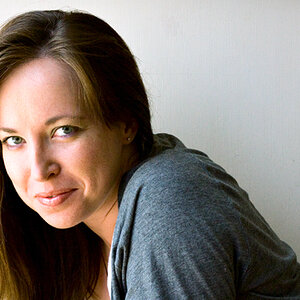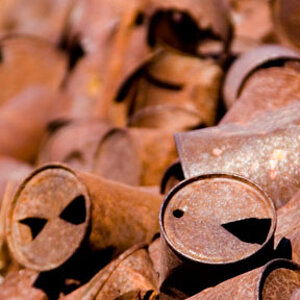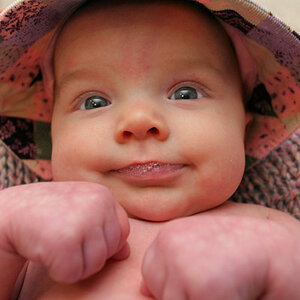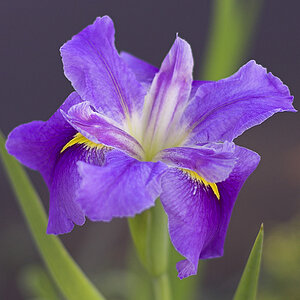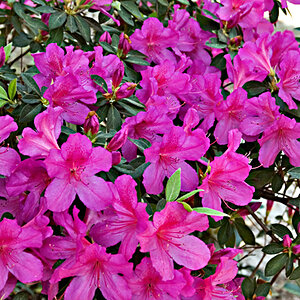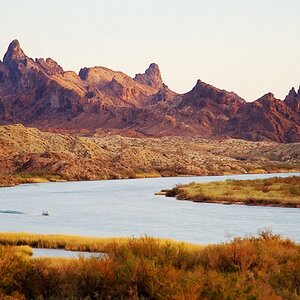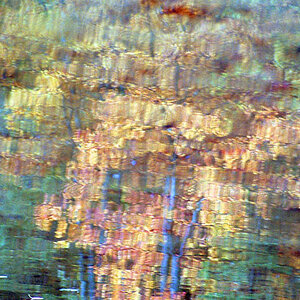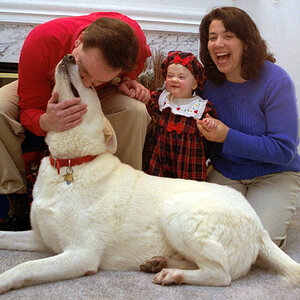Navigation
Install the app
How to install the app on iOS
Follow along with the video below to see how to install our site as a web app on your home screen.

Note: This feature currently requires accessing the site using the built-in Safari browser.
More options
You are using an out of date browser. It may not display this or other websites correctly.
You should upgrade or use an alternative browser.
You should upgrade or use an alternative browser.
Help want to take picture of the moon!
- Thread starter jeerkerr
- Start date
Derrel
Mr. Rain Cloud
- Joined
- Jul 23, 2009
- Messages
- 48,225
- Reaction score
- 18,941
- Location
- USA
- Website
- www.pbase.com
- Can others edit my Photos
- Photos OK to edit
The moon is illuminated by sunlight, so the exposure is pretty close to a "daylight, in sunlight" landscape shot. Yes, you ought to be able to get an "okay" shot at the 300mm end of the lens. Sunny 16 Rule is ISO speed for shutter speed: lens at f/16; lens at f/11, shutter speed is 2x the ISO value' at f/8 lens opening, the shutter speed is again, doubled from the previous speed.
ISO 100, f/16, shutter at 1/100; ISO 100 f/11, shutter at 1/200 second; ISO 100 at f/8 shutter at 1/400 second.
ISO 200 at f/16, shutter at 1/200; ISO 200 lens at f/11 shutter at 1/400; ISO 200 lens at f/8 shutter at 1/800 second.
Keep in mind...there is some slight movement of the moon!
Adding the tele-converter to the 75-300mm lens will magnify the moon's size and will magnify camera shake and will magnify movement of the moon, so use ISO 200 or ISO 250 or ISO 320 when using the telephoto converter.
ISO 100, f/16, shutter at 1/100; ISO 100 f/11, shutter at 1/200 second; ISO 100 at f/8 shutter at 1/400 second.
ISO 200 at f/16, shutter at 1/200; ISO 200 lens at f/11 shutter at 1/400; ISO 200 lens at f/8 shutter at 1/800 second.
Keep in mind...there is some slight movement of the moon!
Adding the tele-converter to the 75-300mm lens will magnify the moon's size and will magnify camera shake and will magnify movement of the moon, so use ISO 200 or ISO 250 or ISO 320 when using the telephoto converter.
OGsPhotography
No longer a newbie, moving up!
- Joined
- Nov 17, 2015
- Messages
- 809
- Reaction score
- 385
- Can others edit my Photos
- Photos OK to edit
That'll work, a tripod is near essential as well for the moon.
300mm is a good focal length for the moon. I used my 200 for a few shots this summer but it doesnt fill the frame well. 300 and a tele concerter will be great.
The moon is usually plenty bright so the 5.6 aperture of the lens shouldnt matter.
300mm is a good focal length for the moon. I used my 200 for a few shots this summer but it doesnt fill the frame well. 300 and a tele concerter will be great.
The moon is usually plenty bright so the 5.6 aperture of the lens shouldnt matter.
TCampbell
Been spending a lot of time on here!
- Joined
- Mar 31, 2012
- Messages
- 3,614
- Reaction score
- 1,556
- Location
- Dearborn, MI
- Can others edit my Photos
- Photos OK to edit
The moon is a very easy exposure. Your camera and lens are easily able to do this.
There's a simple exposure rule that helps you determine the correct exposure (because the camera's metering system will likely be fooled by the blackness of the surrounding sky). Use a Manual exposure mode ("M" on the dial.)
If you set the aperture value (aka "f-stop") to f/11 then the shutter speed is simply the inverse of the ISO setting.
So if you are using ISO 100, then the correct shutter speed (at f/11) would be 1/100th. If you use ISO 200 then the correct shutter speed would be 1/200th.
This relationship for the moon is called the "Looney 11 Rule" (see: Looney 11 rule - Wikipedia ) You can find numerous articles on this.
You don't actually have to use f/11... but this is the only f-stop at which the shutter speed is simply the inverse of the ISO setting. So... suppose you want a faster shutter speed. You could shoot at f/8 (which doubles how much light passes through the lens as compared to what it would have collected at f/11) and that means that since you're getting twice as much light, you only need to expose for half as long. So at ISO 100 and f/8 you would use 1/200th sec instead of 1/100th sec. If you drop the f-stop down to f/5.6 (which doubles the light again) then you could take the shot at 1/400th sec.
The camera's focus system likely can achieve good focus on the moon (it's large enough and bright enough - particular if you focus just near the edge of the moon). Focusing on stars is much trickier because they aren't bright enough nor large enough for the focus system to work on them (it's always a manual focus task).
One more tip... if you shoot during (or near) the "full moon" then the moon has rather flat lighting. It looks like a 2-D disk without much interesting contrast. If you shoot nearer to the 1st Quarter moon when the light is hitting the sun from the side, then the lunar landscape produces shadows which really bring out the 3-D nature of the craters and mountains. It produces a much more interesting looking moon.
Here's a shot I took a couple of years ago. There's a story with this. I was at a monthly astronomy club "Beginner's Night" event with my scope and one of the guests was interested in learning how to take an exposure of the moon. I normally never do any astrophotography on a "Beginner's Night" because it's more of a visual-observing event when the public is present. But I just happened to have my camera with me.
I explained the process, I told the guest that no guessing is required... you can nail this exposure on your first try if you know the rule. So I dialed in the Looney 11 exposure of ISO 100 and 1/100th sec (the scope is an f/5.4 but I happened to be using a 2x teleconverter making it effectively f/11 (f/10.8 - close enough). We focused the camera, and I took just ONE exposure.
This is that one exposure: (again... no guessing needed)
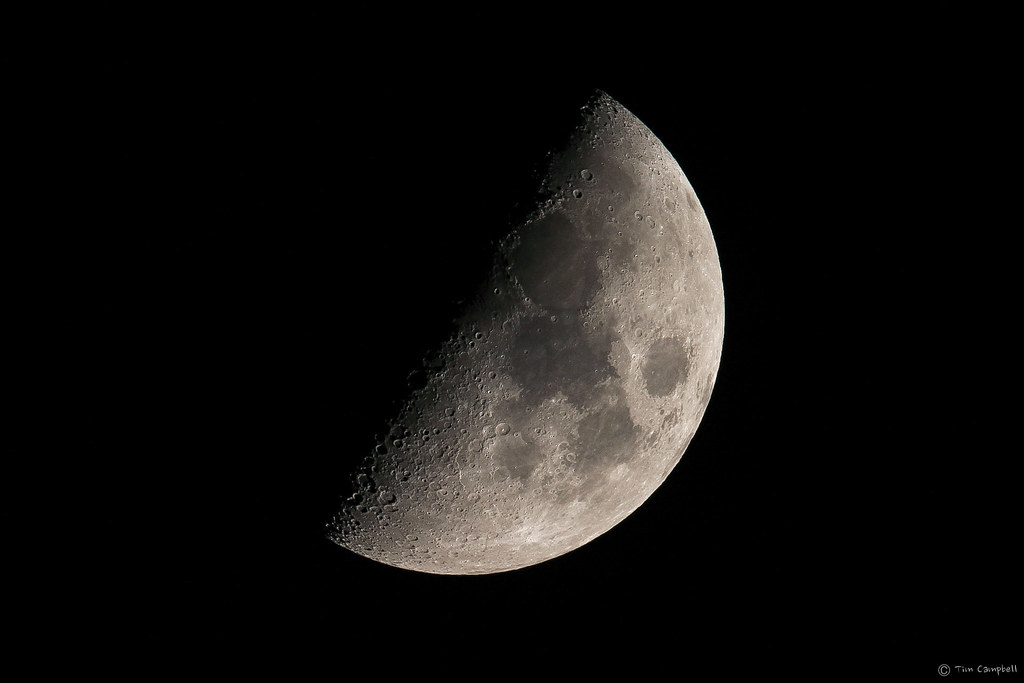
First Quarter Moon by Tim Campbell, on Flickr
With your 300mm the moon wont be as large. My scope was giving me an 1100mm focal length and I did crop in just a tiny bit (a 1500mm focal length would have filled the frame.) You should still capture some nice detail.
There's a simple exposure rule that helps you determine the correct exposure (because the camera's metering system will likely be fooled by the blackness of the surrounding sky). Use a Manual exposure mode ("M" on the dial.)
If you set the aperture value (aka "f-stop") to f/11 then the shutter speed is simply the inverse of the ISO setting.
So if you are using ISO 100, then the correct shutter speed (at f/11) would be 1/100th. If you use ISO 200 then the correct shutter speed would be 1/200th.
This relationship for the moon is called the "Looney 11 Rule" (see: Looney 11 rule - Wikipedia ) You can find numerous articles on this.
You don't actually have to use f/11... but this is the only f-stop at which the shutter speed is simply the inverse of the ISO setting. So... suppose you want a faster shutter speed. You could shoot at f/8 (which doubles how much light passes through the lens as compared to what it would have collected at f/11) and that means that since you're getting twice as much light, you only need to expose for half as long. So at ISO 100 and f/8 you would use 1/200th sec instead of 1/100th sec. If you drop the f-stop down to f/5.6 (which doubles the light again) then you could take the shot at 1/400th sec.
The camera's focus system likely can achieve good focus on the moon (it's large enough and bright enough - particular if you focus just near the edge of the moon). Focusing on stars is much trickier because they aren't bright enough nor large enough for the focus system to work on them (it's always a manual focus task).
One more tip... if you shoot during (or near) the "full moon" then the moon has rather flat lighting. It looks like a 2-D disk without much interesting contrast. If you shoot nearer to the 1st Quarter moon when the light is hitting the sun from the side, then the lunar landscape produces shadows which really bring out the 3-D nature of the craters and mountains. It produces a much more interesting looking moon.
Here's a shot I took a couple of years ago. There's a story with this. I was at a monthly astronomy club "Beginner's Night" event with my scope and one of the guests was interested in learning how to take an exposure of the moon. I normally never do any astrophotography on a "Beginner's Night" because it's more of a visual-observing event when the public is present. But I just happened to have my camera with me.
I explained the process, I told the guest that no guessing is required... you can nail this exposure on your first try if you know the rule. So I dialed in the Looney 11 exposure of ISO 100 and 1/100th sec (the scope is an f/5.4 but I happened to be using a 2x teleconverter making it effectively f/11 (f/10.8 - close enough). We focused the camera, and I took just ONE exposure.
This is that one exposure: (again... no guessing needed)

First Quarter Moon by Tim Campbell, on Flickr
With your 300mm the moon wont be as large. My scope was giving me an 1100mm focal length and I did crop in just a tiny bit (a 1500mm focal length would have filled the frame.) You should still capture some nice detail.
TCampbell
Been spending a lot of time on here!
- Joined
- Mar 31, 2012
- Messages
- 3,614
- Reaction score
- 1,556
- Location
- Dearborn, MI
- Can others edit my Photos
- Photos OK to edit
The moon is illuminated by sunlight, so the exposure is pretty close to a "daylight, in sunlight" landscape shot. Yes, you ought to be able to get an "okay" shot at the 300mm end of the lens. Sunny 16 Rule is ISO speed for shutter speed: lens at f/16; lens at f/11, shutter speed is 2x the ISO value' at f/8 lens opening, the shutter speed is again, doubled from the previous speed.
The only catch with this is that the surface of the moon isn't very reflective. Only about 1/8th of the sunlight that hits the moon will reflect back. Astronomers refer to this as "surface albedo" or sometimes just "albedo" for short. The surface albedo of the moon is roughly equivalent to a worn black asphalt road or an old black tire (so a little faded and gray looking rather than a rich black look of a fresh laid road). This means that an exposure using the Sunny 16 rule will work, but the moon will be looking a little dim. So instead the Looney 11 rule is preferred for the moon (1 stop brighter) to compensate for the moon's poor reflectivity.
TCampbell
Been spending a lot of time on here!
- Joined
- Mar 31, 2012
- Messages
- 3,614
- Reaction score
- 1,556
- Location
- Dearborn, MI
- Can others edit my Photos
- Photos OK to edit
I'm uncertain of the translation for a 'tele objektivt'? My guess is that you may be referring to a 1.4x or 2.0x focal length multiplier (tele-converter or tele-extender).
If that is correct, then yes, you certainly can use one if they are compatible with your lens (not all focal length multipliers are compatible with all lenses.)
Also, when you multiply the focal length of the lens, you also multiplier the focal ratio of the lens. Most cameras do not have working auto-focus supported if the focal length is higher than f/5.6. There are a few exceptions... these exceptions tend to be the newer high-end cameras (pro or semi-pro bodies).
This means if you want working auto-focus then a 1.4x multiplier should not be used with a lens unless it's focal ratio is f/4 or lower. If you use a 2x multiple then it should not be used with a lens unless it's focal ratio is f/2.8 or lower.
If you were to attempt to use, say... a 2x focal length multiplier with a 75-300mm f/4-5.6 lens at the 300mm end, then it would effectively become a 600mm f/11 lens and the auto-focus system wont work (on any camera).
My image above was taken through a telescope (not a camera lens) but the telescope was a 540mm f/5.4 scope (telescopes do not have adjustable apertures), but I used a 2x focal length multiplier (in my case it was a TeleVue 2x 'PowerMate' (TeleVue's name for their high-end "Barlow" (focal length multiplier) and these are designed to be able to mount between camera and telescope). This effectively gives me a 1080mm f/11 telescope. While that's beyond the auto-focus capabilities of a camera, remember that since I'm using a telescope I have to do manual focus anyway -- so that was not an issue for me.
If that is correct, then yes, you certainly can use one if they are compatible with your lens (not all focal length multipliers are compatible with all lenses.)
Also, when you multiply the focal length of the lens, you also multiplier the focal ratio of the lens. Most cameras do not have working auto-focus supported if the focal length is higher than f/5.6. There are a few exceptions... these exceptions tend to be the newer high-end cameras (pro or semi-pro bodies).
This means if you want working auto-focus then a 1.4x multiplier should not be used with a lens unless it's focal ratio is f/4 or lower. If you use a 2x multiple then it should not be used with a lens unless it's focal ratio is f/2.8 or lower.
If you were to attempt to use, say... a 2x focal length multiplier with a 75-300mm f/4-5.6 lens at the 300mm end, then it would effectively become a 600mm f/11 lens and the auto-focus system wont work (on any camera).
My image above was taken through a telescope (not a camera lens) but the telescope was a 540mm f/5.4 scope (telescopes do not have adjustable apertures), but I used a 2x focal length multiplier (in my case it was a TeleVue 2x 'PowerMate' (TeleVue's name for their high-end "Barlow" (focal length multiplier) and these are designed to be able to mount between camera and telescope). This effectively gives me a 1080mm f/11 telescope. While that's beyond the auto-focus capabilities of a camera, remember that since I'm using a telescope I have to do manual focus anyway -- so that was not an issue for me.
Similar threads
- Replies
- 3
- Views
- 439
- Replies
- 12
- Views
- 880
- Replies
- 2
- Views
- 130

![[No title]](/data/xfmg/thumbnail/33/33362-84aacb865117bf8cba89104b89e9b36c.jpg?1619735927)
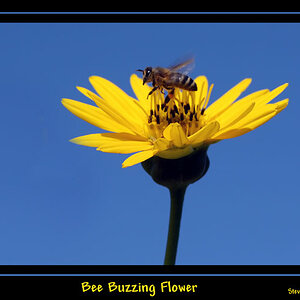
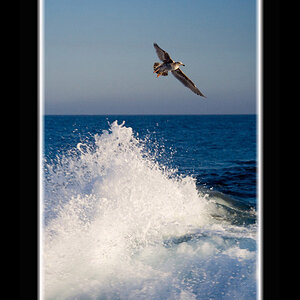
![[No title]](/data/xfmg/thumbnail/36/36299-468f060314a0ac2bf5e37da1c33149d2.jpg?1619737493)
